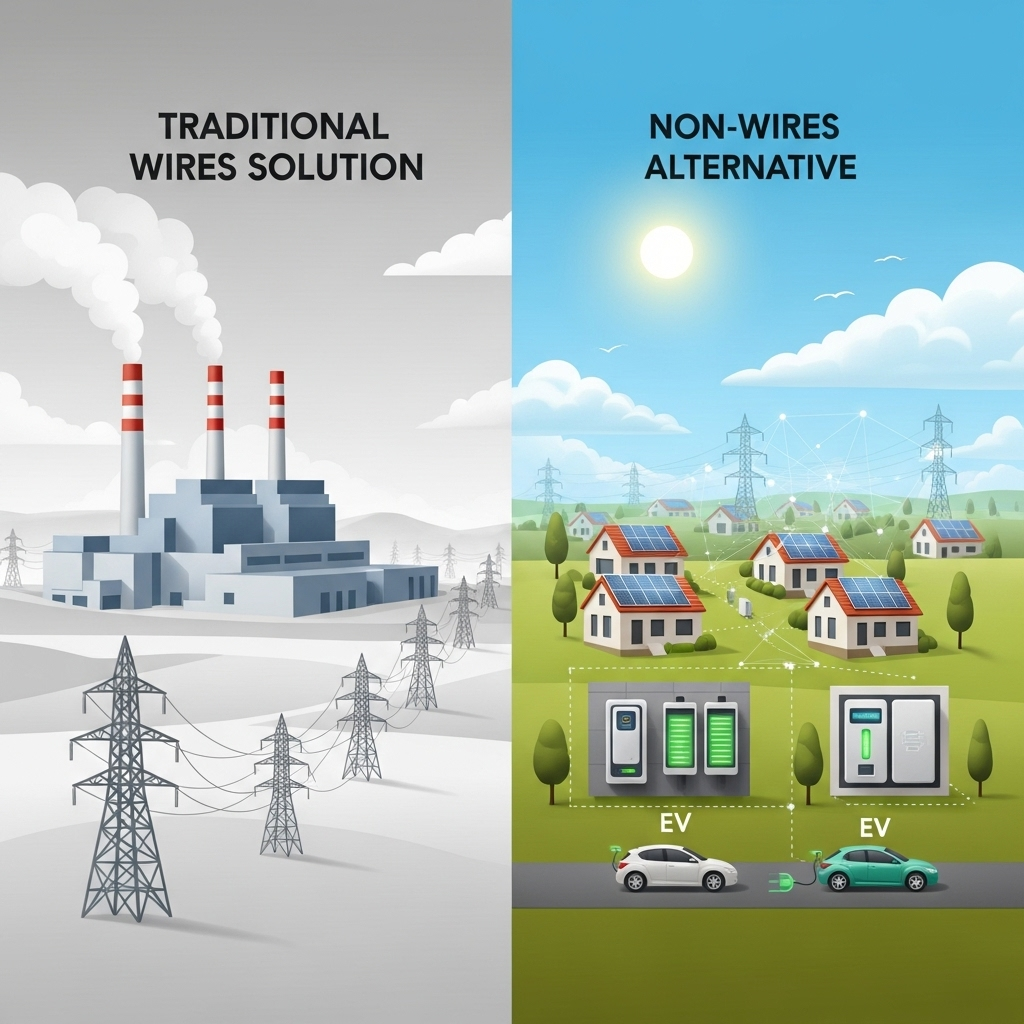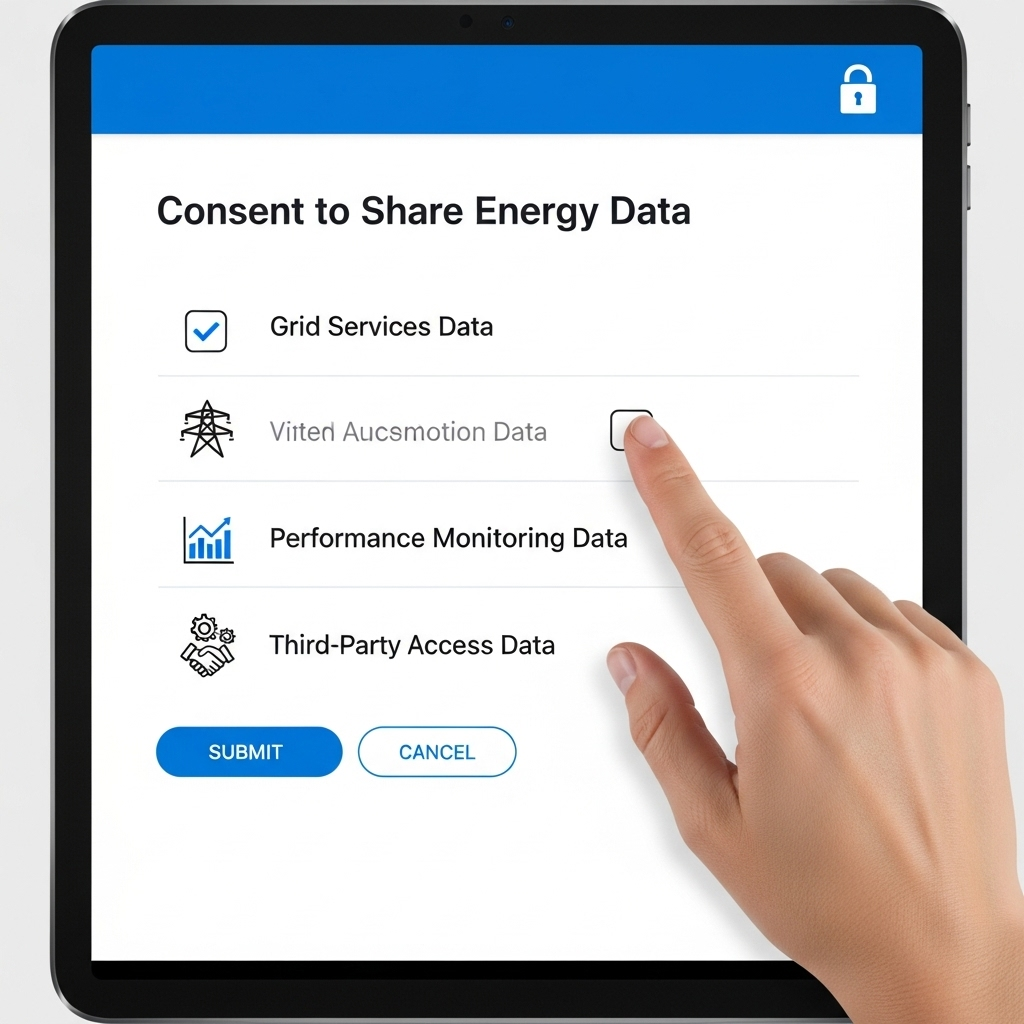The energy grid is undergoing a massive transformation. As more solar and storage systems connect to the grid, the old ways of managing power flow are no longer sufficient. Traditional interconnection agreements, often rigid and slow, can create bottlenecks that delay projects and limit the potential of renewable energy. The solution lies in smarter, more dynamic agreements. Flexible interconnection contracts are the tools that enable this modern approach to distribution planning.
These contracts are not just legal paperwork; they are active frameworks that allow renewable energy assets, like solar farms and battery storage systems, to become cooperative partners with the grid. By incorporating specific clauses, developers and utilities can create a system that is more resilient, efficient, and ready for a high-penetration renewable future.
The Foundation of Flexible Interconnection
Understanding why flexibility is crucial is the first step. The variable nature of solar and wind power presents a challenge for grid operators who must maintain a constant balance between supply and demand. Flexible contracts provide the mechanisms to manage this variability effectively.
Moving Beyond Rigid Frameworks
For decades, the interconnection model was simple: a project was studied for its maximum potential impact and then allowed to connect, often with a fixed export limit. This 'connect-and-forget' approach is inefficient. It often requires expensive grid upgrades to handle worst-case scenarios that may rarely occur. Flexible interconnection, by contrast, manages the connection dynamically, allowing for more generation to connect to the existing grid without compromising reliability. As noted in the IEA's report on Harnessing Variable Renewables, balancing the grid requires a combination of dispatchable generation, demand-side response, storage, and interconnection, all of which can be coordinated through intelligent contracts.
The Role of Non-Wires Alternatives (NWAs)
Flexible contracts are the gateway for projects to act as Non-Wires Alternatives. An NWA is a solution, such as a battery storage system or a strategically controlled solar plant, that can defer or completely replace the need for traditional infrastructure like new substations or power lines. By providing targeted power when and where it's needed, these assets can solve grid congestion issues more quickly and at a lower cost than building new poles and wires. This proactive approach to planning helps avoid the long development timelines associated with typical transmission projects, which the IEA's Status of Power System Transformation 2019 report indicates can take around 10 years.
Core Clauses for Enhanced Grid Responsiveness
The heart of a flexible contract lies in clauses that define how a project will interact with the grid in real-time. These three clauses form the operational core of the agreement.
1. Dynamic Power Output Control
Instead of a fixed export limit, this clause allows the utility to request adjustments to the project's power output. For a solar-plus-storage system, this could mean temporarily reducing solar output or charging the battery during periods of low grid demand. This active control is far superior to simple, blunt curtailment and allows the asset to provide continuous value.
2. Voltage and Reactive Power Support
Modern inverters are capable of more than just converting DC to AC power. This clause requires the interconnected system to help stabilize the grid by providing voltage and reactive power support. This service is critical for maintaining power quality, especially in areas with high levels of distributed energy resources (DERs). It turns the project from a simple energy producer into a supportive grid asset.
3. Curtailment Rights and Compensation
Curtailment—the intentional reduction of output—is sometimes unavoidable. A flexible contract must clearly define the conditions under which a project can be curtailed. Most importantly, it must establish a clear and fair compensation structure. When a utility curtails a project for economic reasons (e.g., negative pricing), the project owner should be compensated for the lost revenue. This clause is vital for reducing financial risk and making projects bankable.
Leveraging Technology and Data for Smart Interconnection
Flexibility is impossible without data and communication. These clauses ensure the necessary technology is in place to enable a dynamic relationship between the project and the grid operator.
4. Advanced Metering and Communication Protocols
This clause mandates the installation of meters and communication hardware that provide real-time visibility into the project's performance. It also specifies secure, two-way communication protocols. This is the technical backbone that allows a grid operator to send control signals and receive status updates, enabling services like dynamic output control. The IEA's China Power System Transformation report emphasizes that requiring the installation of monitoring equipment is a key strategy to embed flexibility into the system.
5. Generation Forecasting Requirements
To manage the grid effectively, operators need to know what to expect. This clause requires the project owner to provide accurate generation forecasts (e.g., for the next hour or day). For solar projects, this involves using weather data to predict output. Accurate forecasts reduce grid uncertainty and allow for more efficient scheduling of all energy resources.
6. Participation in Ancillary Services
This provision explicitly allows and defines how the asset can participate in ancillary services markets. For a battery system, this could mean providing frequency regulation by rapidly charging or discharging to stabilize grid frequency. This clause opens up valuable new revenue streams for the project owner beyond just selling energy, making the investment more attractive.
Structuring the Agreement for Long-Term Success
A well-drafted contract looks beyond day-to-day operations. It creates a durable, fair, and forward-looking partnership.
7. Non-Wires Alternative (NWA) Provisions
This clause goes a step further than just enabling NWA functionality. It defines the specific services the project will provide as an NWA, the performance requirements, and the payment structure. For example, a contract might specify payments for providing a certain amount of power during peak evening hours to alleviate congestion on a local circuit. This aligns with recommendations from the IEA to include NWA proposals in infrastructure expansion plans to deploy DER more effectively.
8. Scalability and Future-Proofing
The energy landscape is evolving rapidly. This clause allows for the contract to be amended as new technologies become available or grid needs change. For instance, it could include a pre-defined process for adding battery storage to an existing solar project or for enabling new grid services as they are defined by regulators.
9. Performance Guarantees and Penalties
To rely on a project for grid stability, a utility needs assurance that it will perform as promised. This clause sets clear key performance indicators (KPIs) for the flexible services provided. It also defines penalties for non-compliance. To meet these guarantees, developers must deeply understand their system's capabilities. A thorough grasp of component behavior, as detailed in references on solar storage performance, is fundamental for designing a reliable and compliant system.
10. Clear Dispute Resolution Mechanisms
When disagreements arise over issues like curtailment events or performance penalties, a clear process is needed to resolve them efficiently. This clause outlines the steps for dispute resolution, such as mediation or arbitration, preventing long and costly legal battles. This is crucial for maintaining a healthy long-term relationship, similar to how Brazil mitigated counterparty risk in its power auctions, as detailed in an IRENA publication on attracting private investment.
| Feature | Traditional Interconnection | Flexible Interconnection |
|---|---|---|
| Power Output | Fixed Maximum Export | Dynamic, Controllable Output |
| Grid Services | Energy Only | Voltage Support, Ancillary Services, NWA |
| Curtailment | Uncompensated, 'Last-on, First-off' | Scheduled, Often Compensated |
| Communication | One-way or None | Two-way, Real-time |
| Project Role | Simple Energy Supplier | Integrated Grid Asset |
Building the Grid of the Future, One Contract at a Time
Flexible interconnection contracts are more than just a trend; they are a fundamental component of modernizing the electric grid. By moving from a rigid, passive model to a dynamic and collaborative one, these agreements unlock immense value. They allow for faster and cheaper integration of renewable energy, provide new revenue opportunities for project developers, and give grid operators the sophisticated tools they need to maintain a reliable and resilient power system. Implementing these ten clauses is a practical step toward building a smarter, cleaner, and more efficient energy future.
Disclaimer: This article is for informational purposes only and does not constitute legal or investment advice. You should consult with a qualified professional before making any decisions related to interconnection agreements or energy project investments.
Frequently Asked Questions
What is a flexible interconnection contract?
A flexible interconnection contract is a modern agreement between a power generator (like a solar or storage facility) and a utility. Unlike traditional contracts with fixed limits, it allows for dynamic control of the generator's output and enables it to provide services to the grid in response to real-time conditions.
Who benefits from flexible interconnection?
Both parties benefit. Project developers can connect to the grid faster, potentially at a lower cost, and can earn new revenue from grid services. Utilities and grid operators gain better tools to manage grid stability, integrate more renewables without costly upgrades, and improve overall system reliability.
Is curtailment the only way to manage grid congestion?
No. Flexible interconnection offers more sophisticated solutions. Instead of simply shutting a project off (curtailment), a utility can use dynamic power control to slightly reduce output across several facilities or instruct battery systems to absorb excess power. These actions are less disruptive and turn a problem into a manageable grid service.
How do Non-Wires Alternatives relate to these contracts?
Flexible interconnection contracts are the enabling mechanism for Non-Wires Alternatives (NWAs). The clauses within the contract define how a distributed energy resource, like a battery system, can be paid to provide a service (like reducing peak load) that would otherwise require building traditional infrastructure like poles and wires.





Leave a comment
All comments are moderated before being published.
This site is protected by hCaptcha and the hCaptcha Privacy Policy and Terms of Service apply.